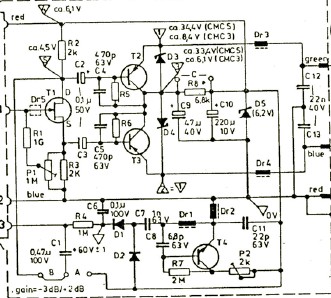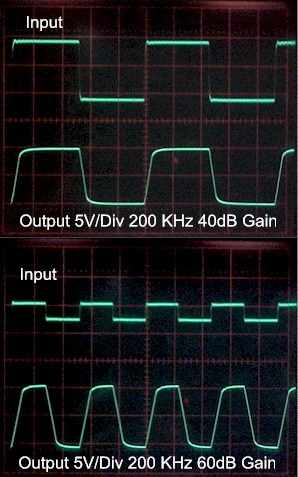I'm curious to hear what you find out about real-world microphone differential voltage offsets. I've heard rumor of bizarre asymmetrical output topologies and wonder how they would affect your circuit, but I don't have any direct experience with them. I hate to name names because I'm going off vague memories of anonymous old usenet posts, but I want to say that the TLM103 maybe has an asymetrical (AC) output and that the Behringer measurement mike (which people seem to like on drums) has an intentionally asymmetrical phantom current draw. Don't quote me on this, but I might suggest these two microphones for a closer look.
Personally, I was most concerned that your vactrol circuit would mess up audio CMRR while trying to compensate DC offset of the preamp's active devices, so I'm glad you went back to the current feed approach which I like.
Another observation I have might be best saved for another thread but I'm going to dump it on you here anyway. At the very outset of this thread, you described your interest in ditching the input coupling caps as an effort to make the preamp fit the microphone, rather than vice-versa:
How about making the preamplifier accommodate the microphone?
So my thought while reading these nine pages of discussion was constantly, "Why not go get the microphone and nail it down?"
The idea of using just one preamp for a particular microphone seems like heresy today when everybody wants unlimited tonal variety and open-ended options. But when you're specifically after neutrality (which you seem to be here) then there's not really room for variety - any tonal variation between "neutral" preamp would be to the degree they failed at being neutral. So rather than selecting a preamp to fit the tonal requirements, we can call that a non-variable. Instead, I'd like to suggest we tailor the preamp to the particular microphone being used. This affords an excellent opportunity to eliminate a bunch of other variables. In the case of your design concept, the common mode input voltage gets much simpler to accommodate if you know the current draw and source impedance of the microphone. Heck, you should also know the differential DC voltage of the mike too, or at least its realistic range. Beyond that, you'll know the mike's sensitivity, noise floor, and overload SPL, so you'll also know the gain range and input signal conditions. I think most of us probably have relatively few mikes we'd grab from our personal collections when we're going to record something and attempt to achieve utmost neutrality. Since DIY is all about customization to your own needs, this doesn't strike me as impractical at all - whereas in the commercial world it would be another story altogether.
Taking this thought to its logical conclusion, I suppose you would start with your ideal microphone capsule and design the mike's electronics, the preamps, and an ADC (or record head driver) as an integrated system. You might even know where you're going to be putting that microphone and what sounds are going to reach it.
But this concept could also be as simple as building one preamp to accommodate phantom-powered mikes (you wouldn't need a +48 switch at all) and another preamp that doesn't even supply phantom power. Both could go without input coupling caps, and you would need fewer compromises if one circuit doesn't need to do both.
And finally, I'd like to thank everybody for the extensive discussion of the 1510. I had been thinking of doing something with this chip, and now I'm feeling more motivated to get on it.
Cheers,


























![Soldering Iron Kit, 120W LED Digital Advanced Solder Iron Soldering Gun kit, 110V Welding Tools, Smart Temperature Control [356℉-932℉], Extra 5pcs Tips, Auto Sleep, Temp Calibration, Orange](https://m.media-amazon.com/images/I/51sFKu9SdeL._SL500_.jpg)







